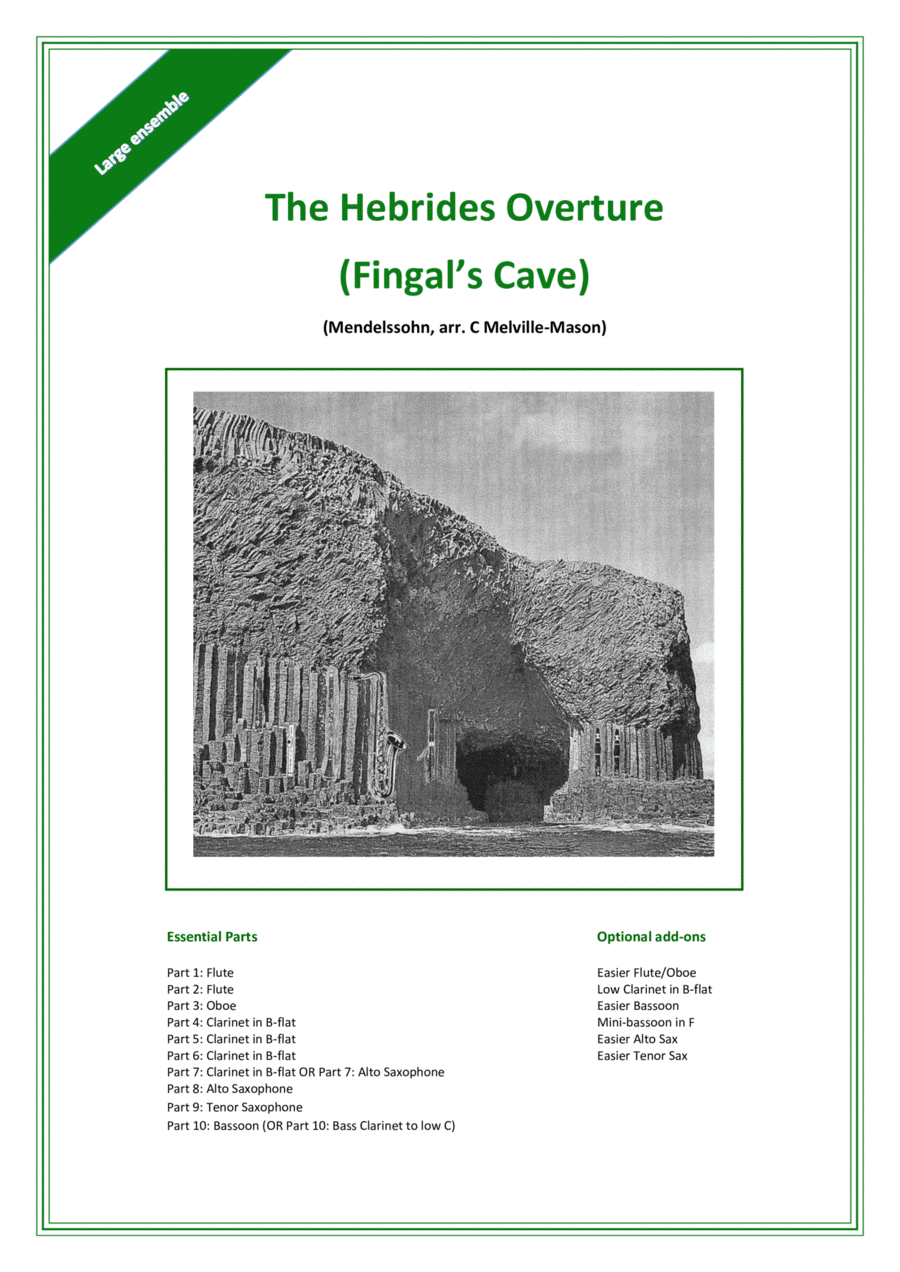Small Ensemble - Level 5 - Digital Download SKU: A0.956662 Composed by Felix Bartholdy Mendelssohn. Arranged by Catriona Melville-Mason. Romantic Period. Score and parts. 127 pages. C Melville-Mason #6735335. Published by C Melville-Mason (A0.956662). This is an arrangement of Mendelssohn’s overture The Hebrides (Fingal’s Cave), intended for a medium-sized woodwind group of perhaps 20 – 30 players. It has been categorised as ‘advanced’, as the length and tempo of the work make it quite challenging. However, provided the main parts are covered by competent players, those with less experience can either double, judiciously omitting any problem sections, or opt for the appropriate ‘easier’ add-on part.This is great fun to attempt, even if your ensemble may not manage it up to performance standard!The piece is scored for the following instrumentation: Essential Parts: Part 1: Flute Part 2: Flute Part 3: Oboe Part 4: Clarinet in B-flat Part 5: Clarinet in B-flat (contains essential divisi, so minimum of 2 players essential) Part 6: Clarinet in B-flat Part 7: Clarinet in B-flat OR Part 7: Alto Saxophone Part 8: Alto Saxophone Part 9: Alto Saxophone Part 10: Bassoon OR Part 10: Bass Clarinet in B-flat (low C instrument essential) Optional add-ons: Easier Flute/Oboe Low Clarinet in B-flat Easier Alto Saxophone Easier Tenor Saxophone Mini-Bassoon in F (an extra, NOT an easy, part) Easier Bassoon Mendelssohn visited Scotland in 1829 and, after a tour of the Highlands, travelled by steamer from Fort William to Oban and thence to the Hebridean island of Mull. From there, he made the short boat trip to the small island of Staffa, to visit Fingal’s Cave – a sea cave formed of hexagonal basalt columns, with a highly intriguing natural acoustic. The Hebrides overture was inspired by this segment of Mendelssohn’s Scottish travels. The work is an early example of a tone poem: a musical representation of the scenery, wind and weather of the Scottish Hebridean islands, reflecting their sudden and infinite changeability. After some revisions, the overture received its first performance in May 1832 and remains a favourite with audiences to this day. It has been central in establishing – and sustaining – the popularity of Fingal’s Cave as a tourist destination. This arrangement was originally created for a woodwind course held on another Scottish island – Skye, which is the largest and most northerly of the Inner Hebrides.
